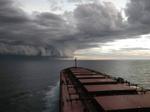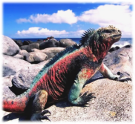Login
Support Sailonline
If you haven't already - join the SAILONLINE YACHT CLUB!
Please also consider making a donation - all amounts are greatly appreciated!
Page: First Previous 3 4 5 6 7 8 9 Next Last
|
Posted by kroppyer  |
|
|
I've run some more tests, and sometimes the models predict a value that is so close to the actual one that it's scary, I've seen a difference of 0.000000004 (I might have missed a zero).
Looking at my results, I think we have (almost) unravelled the performance recovery model: new_perf = min(100, old_perf + delta_time*3/(20*abs(boatspeed))) > new_perf and old_perf in % > boatspeed is actual boatspeed (not boatspeed when perf would be 100%) from previous "server jump" in knots > delta_time: time since previous "server jump", in seconds > abs(x) makes x positive > min(x, y) returns the smallest value of x and y. This formula basically translates to "Your performance will increase with 9/boatspeed% per minute, until you reach 100%" The performance loss model that matches the actual values the best, is really close, but no perfect match: if(tack or gybe and old_perf >= 93) new_perf = old_perf * (1 - abs(boatspeed)/200) else if(normal course change and old_perf >= 93) new_perf = old_perf * (1 - dTWA/25) end if > new_perf and old_perf in % > boatspeed in knots > dTWA is the positive difference between TWA before and after the course change, in radians (1 radian = 180/pi degrees) I think the last thing to unravel is what boatspeed to use in the calculation for performance loss while taking/gybing. > new boatspeed if perf would be 100% > old boatspeed if perf would be 100% > new boatspeed if perf would be the the same as before the tack > old actual boatspeed (with performance the same as before the tack) And there's another thing to do with performance loss that I we haven't tried yet: bbq'ing, I'm not sure why we would want to know the exact performance loss after a bbq, but why not? Attached: > Image with actual values, and values as predicted by 4 different models: - model 1: use current boatspeed for tack/gybe-perf.loss-calculation - model 2: use max boatspeed (when perf would be 100%) for tack/gybe-perf.loss-calculation - model 3: like model 1, but performance loss is directly subtracted from performance (instead of multiplying with the (1 - loss) thing. - model 4: like model 2, but same substraction method as in model 3 model 1 fits best. > Raw data, csv file, can be opened with excel |
|
|
Posted by javakeda  |
|
|
Kroppyer wrote:
>>>>>
>>>>> So, just to complete the logic [and make sure that I am following you] ... If the code falls through the IFs above, we are left with: new_perf = min(100, old_perf + delta_time*3/(20*abs(boatspeed))) And that implements the 93% rule? Can you determine from the data whether the "recovery" code executes before, after, or instead of the "course change" code? Thank you for your work on this. |
|
|
Posted by Go4iT  |
|
|
Looks like it is about time for the SOL developers to change the performance loss parameters! hehehe
|
|
|
Posted by Rod |
|
|
Why? It wasn't supposed to be a secret, was it? However, it does seem somewhat complicated, unless it was derived from actual data gathered from IRL boats. I would question, however the perf loss from a gybe,, which seems too great, UNLESS it involves dropping and re-hoisting a spinnacker. And a mere change of course should not involve a perf loss of any great amount. The rudder is still a good brake, however!
I am going to attempt to reduce the math to two ready-reference graphs, one showing perf loss at any angle and wind-speed, the other showing expected recovery and time to add to any DC to compensate for the loss in distance travelled. If it breaks, it's not strong enough--if it doesn't, it's too heavy. |
|
|
Posted by A2  |
|
|
Why Rod ? Why Indeed !
The Rationale for this hindrance has been expounded on in the previously linked thread. Wrong Speed VMG Posted by Jakob Kuttenkeuler 2009-02-12 "We introduced this performance loss not to punish normal sailing maneouvers but to prevent boats to tack e.g. once every minute during hours just to ride on a tws that optimizes vmg. The performance loss implementation succeeded in preventing that behavior and is as stated above not a problem for normal maneouvers." But please don't let me stop anyone from actually going to the source material and reading it for themselves as there are even more useful tidbits to be gleaned should one choose to do so. There is merit in spending an equal amount of time reading these Forums as is devoted to contributing in them. None so blind |
|
|
Posted by javakeda  |
|
|
A2R: Thanks for the link to that thread.
To think that the PERF formulas have been sitting on the forum since 2009! Ya think we need a search function for this puppy? Or, as you suggested, ya think we need to RTFF? (Note: Those who know me as an avid fan of MAD Magazine will recognize that the first 'F' in the acronym above stands for 'Furshlugginer'.) |
|
|
Posted by A2  |
|
|
NSA recommends using Google for this purpose
site:http://www.sailonline.org/board/ "performance loss" yeilded only only 9 hits when I went looking for it. Today there are 11. Took about all of 20 minutes to find the good stuff. Time well spent considering. None so blind |
|
|
Posted by kroppyer  |
|
|
Performance Recovery
new_perf = min(100, old_perf + delta_time*3/(20*abs(boatspeed))) > new_perf and old_perf in % > boatspeed is actual boatspeed (not boatspeed when performance would be 100%) from previous performance calculation. Speed in knots > delta_time: time since previous performance calculation, in seconds > abs(x) makes x positive > min(x, y) returns the smallest value of x and y. This formula basically translates to "Your performance will increase with 9/boatspeed% per minute, until you reach 100%" Performance loss if(tack or gybe and old_perf >= 93) new_perf = old_perf * (1 - abs(boatspeed)/200) else if(normal course change and old_perf >= 93) new_perf = old_perf * (1 - dTWA/25) end if > new_perf and old_perf in % > boatspeed is the boat speed after the tack, calculated using the old performance. Speed in knots > dTWA is the positive difference between TWA before and after the course change, in radians (1 radian = 180/pi degrees) I believe performance loss only kick in when a command is executed, or when the boat tacks or gybes (when you are sailing cc trough a windshift, your performance drops when you gybe/tack) I think performance recovery is also active in the "server jump" that performance loss is calculated. But the command to change course can be at the start of the server jump, or at the end, or somewhere in between. I'm not sure what boatspeeds are used how in the recovery formula in the same jump performance loss is calculated. I think we have reach the limit now, the server jumps limit us from being more accurate, and I think it's not really of any use to be able to predict performance more accurate. I will, when I caught up with other things I should've done, implement this performance model in my program spinnacer, so that calculations with performance will be easier to do. --- It might be interesting to think of tricks with this model. hmm did his trick with the gybe, but I'm sure there's more: - a 100.3 degree course change will cause 7% performance loss. So when you need to do a sharper turn (without gybing/tacking) you can turn 105 degrees first (perf<93%), and directly after that the rest of the turn (perf does not drop anymore than those 93%) - Performance loss is smaller when your performance is not yet at 100%, but you're faster when you wait for your performance to reach 100% (sailing two times 5 minutes with average performance 98.5% is faster than sailing 10 minutes with an average performance of 97.2%). But what if your perf is lower than 93%, it's of course better to do it at that moment, as it won't do anything with your performance. And then there's an area in between, where part of the perf. loss could be "absorbed" by the 93% rule. - Tacking, and then turning to the right course is extra performance loss, if you tack to the right course in one go, it faster, unless boat speeds differ much.. It's getting complicated.. - It in light winds, it might be better to do two tacks/gybes instead of one course change. Since tacking/gybing doesn't result in a big drop in performance when sailing slow, while a course change always has the same performance drop. - etc.. etc.. I think we have unravelled the model and calculations, now comes the hard part: how to use it in our advantage |
|
|
Posted by Go4iT  |
|
Tried that as a search engine in Google and got '404'. What am I doing wrong?
--- Last Edited by Go4iT at 2013-10-15 23:16:35 --- |
|
|
Posted by A2  |
|
|
Go to Google;
In the Search bar site: followed without any space by the url of this board then your search terms after that You can also go to the link at the bottom of the Google search page and click the link that says "Advanced Search" There are boxes there to do the same thing, so when you hit search look at how Google has arranged the same business in the Search bar for you. --- Last Edited by A2R at 2013-10-16 00:12:13 --- None so blind |
Page: First Previous 3 4 5 6 7 8 9 Next Last
Please login to post a reply.Races
Next Race: 00d 00h 00m
Current Races:
Cross the Convergence 2026 - Robinson Crusoe to Galapagos

Welcome to our first race of a new series of ocean voyages across the World’s convergence zones, this first race taking you north from south of the Tropic of Capricorn to the Equator-straddling Galapagos, home of magical iguanas and other exotic fauna (but no mythical kings, Dory) Departing from the island where in 1704 adventurer Alexander Selkirk inspired Daniel Defoe to write the best-seller "The Life and Adventures of Robinson Crusoe", by debarking off the unsound "HMS Cinque Ports", four months before she foundered off the coast of present-day Colombia, we will sail the 2200nm in our decidedly sounder and faster than the " Cinque Ports",
Ocean 50 !
Race #1983
INFOby brainaid.de
Ocean 50 PARTICULARS
WX Updates:
0430 / 1030 / 1630 / 2230
Ranking: CCZ - SYC
Race starts: Jan 16th 18:00 Registration Open!
GO TO RACE
Bight of Bonny TIMED Race 2026

Race #2004
INFOby brainaid.de
Farr 38 Particulars
WX Updates:
0430 / 1030 / 1630 / 2230
Ranking:
TRQ1 - TRCH - SYC
RACE CLOSE: Saturday,
24 January at 23:00 UTC
Race starts: Jan 11th 12:00 Registration Open!
GO TO RACE
Natuna Sea Race 2026
At 4.0N 108.2E lies the island of Natuna Besar, Great Natuna, surrounded by at least 154 islands, of which 127 uninhabited, Indonesia’s Natuna Regency, and all around this archipelago, the Natuna Sea, bordered by Borneo to the east, the Java Sea to the south, and the Malay peninsula to the west, and extending north to cross a disputed international border with China into the South China Sea. And it’s a border that matters, there’s gas here! But why worry, let’s race – 2050nm in our goo’ol’ Open 60s in between the production platforms, prowling destroyers and submarines.
Race #1997
INFOby brainaid.de
Open 60 PARTICULARS
WX Updates:
0430 / 1030 / 1630 / 2230
Ranking: SYC
Race starts: Jan 06th 17:00 Registration Closed
GO TO RACE
Cape Town to Rio 2026

Welcome to South Africa and RCYC's classic transatlantic Cape2Rio Race from Cape Town, South Africa, to Rio de Janeiro, Brazil. First run in 1971, this run is buddied with the IRL, Cape2Rio 2025 arranged by the Royal Cape Yacht Club with the cooperation of the
Iate Clube do Rio de Janeiro Despite this being announced the 2025 race (starting dec. 27) it is the 2026 SOL championship kickoff. This virtual version, will be raced once again in Mark Mills' 74ft speedster, the stunning C2R74.
Race #1996 INFO
by brainaid.de
C2R74 PARTICULARS
WX Updates:
0430 / 1030 / 1630 / 2230
Ranking:
OCQ1 - OCCH - SUPBUD - SYC
Race starts: Dec 27th 12:00
Registration Closed
SYC Ranking
Series
- SYC ranking
- 2026 TSI
- 2026 TRQ4
- 2026 TRQ3
- 2026 TRQ2
- 2026 TRQ1
- 2026 TRCH
- 2026 TQD
- 2026 SUPerBUDdy
- 2026 SSANZ
- 2026 SPQ4
- 2026 SPQ3
- 2026 SPQ2
- 2026 SPQ1
- 2026 SPCH
- 2026 SHE
- 2026 ROW
- 2026 RNW
- 2026 RNI
- 2026 RMI
- 2026 RED
- 2026 OCQ4
- 2026 OCQ3
- 2026 OCQ2
- 2026 OCQ1
- 2026 OCCH
- 2026 NIA
- 2026 MIG
- 2026 MED
- 2026 LOOR
- 2026 CCZ
- 2026 BOL
- 2026 B2B
- 2025 TS
- 2025 TRQ4
- 2025 TRQ3
- 2025 TRQ2
- 2025 TRQ1
- 2025 TRCH
- 2025 TD
- 2025 SuperSOLer
- 2025 SSANZ
- 2025 SPRCH
- 2025 SPQ4
- 2025 SPQ3
- 2025 SPQ2
- 2025 SPQ1
- 2025 SHE
- 2025 SBB
- 2025 RWW
- 2025 RMI
- 2025 RED
- 2025 OCQ4
- 2025 OCQ3
- 2025 OCQ2
- 2025 OCQ1
- 2025 OCCH
- 2025 NT
- 2025 LOOR
- 2025 DN
- 2025 B2B
- 2025 ARQ4
- 2025 ARQ3
- 2025 ARQ2
- 2025 ARQ1
- 2025 ARCH
- 2025 ABS
- 2024 TS
- 2024 TRQ4
- 2024 TRQ3
- 2024 TRQ2
- 2024 TRQ1
- 2024 TRCH
- 2024 TD
- 2024 SVF
- 2024 SUPerSOLer
- 2024 SSANZ
- 2024 SPRQ4
- 2024 SPRQ3
- 2024 SPRQ2
- 2024 SPRQ1
- 2024 SPRCH
- 2024 SHE
- 2024 RTW
- 2024 RMS
- 2024 OCQ4
- 2024 OCQ3
- 2024 OCQ2
- 2024 OCQ1
- 2024 OCCH
- 2024 LOOR
- 2024 HILAT
- 2024 GWT
- 2024 DN
- 2024 CRW
- 2024 B2B
- 2024 ARQ4
- 2024 ARQ3
- 2024 ARQ2
- 2024 ARQ1
- 2024 ARCH
- 2023 TS
- 2023 TRQ4
- 2023 TRQ3
- 2023 TRQ2
- 2023 TRQ1
- 2023 TRCH
- 2023 TD
- 2023 SVS
- 2023 SUPerSOLer
- 2023 SSANZ
- 2023 SPRQ4
- 2023 SPRQ3
- 2023 SPRQ2
- 2023 SPRQ1
- 2023 SPRCH
- 2023 SHE
- 2023 RTW
- 2023 RNI
- 2023 RMS
- 2023 PIC
- 2023 OCQ4
- 2023 OCQ3
- 2023 OCQ2
- 2023 OCQ1
- 2023 OCCH
- 2023 LOOR
- 2023 DN
- 2023 ARQ4
- 2023 ARQ3
- 2023 ARQ2
- 2023 ARQ1
- 2023 ARCH
- 2022 TRQ4
- 2022 TRQ3
- 2022 TRQ2
- 2022 TRQ1
- 2022 TRCH
- 2022 TD
- 2022 Tall Ships
- 2022 SUPerSOLer
- 2022 SSANZ
- 2022 SSA
- 2022 SPRQ4
- 2022 SPRQ3
- 2022 SPRQ2
- 2022 SPRQ1
- 2022 SPRCH
- 2022 SHE
- 2022 OCQ4
- 2022 OCQ3
- 2022 OCQ2
- 2022 OCQ1
- 2022 OCCH
- 2022 NTR
- 2022 LOOR
- 2022 CTR
- 2022 ARQ4
- 2022 ARQ3
- 2022 ARQ2
- 2022 ARQ1
- 2022 ARCH
- 2021 TRQ4
- 2021 TRQ3
- 2021 TRQ2
- 2021 TRQ1
- 2021 TRCH
- 2021 TD
- 2021 Tall Ships
- 2021 SYCQ4
- 2021 SYCQ3
- 2021 SYCQ2
- 2021 SYCQ1
- 2021 SYCCH
- 2021 SUPerSOLer
- 2021 SSANZ
- 2021 SPRQ4
- 2021 SPRQ3
- 2021 SPRQ2
- 2021 SPRQ1
- 2021 SPRCH
- 2021 Shetland
- 2021 PAC6
- 2021 OCQ4
- 2021 OCQ3
- 2021 OCQ2
- 2021 OCQ1
- 2021 OCCH
- 2021 ESRW
- 2020 TSE
- 2020 TSA
- 2020 TRQ4
- 2020 TRQ4
- 2020 TRQ3
- 2020 TRQ2
- 2020 TRQ1
- 2020 TRCH
- 2020 Tasman Double
- 2020 SYCQ4
- 2020 SYCQ3
- 2020 SYCQ2
- 2020 SYCQ1
- 2020 SYCCH
- 2020 SUPerSOLer
- 2020 SSANZ
- 2020 SRQ4
- 2020 SRQ3
- 2020 SRQ2
- 2020 SRQ1
- 2020 SPRCH
- 2020 Shetland
- 2020 RTW
- 2020 RNI
- 2020 Odyssey
- 2020 OCQ4
- 2020 OCQ3
- 2020 OCQ2
- 2020 OCQ1
- 2020 OCCH
- 2020 A3
- 2019 TRQ4
- 2019 TRQ3
- 2019 TRQ2
- 2019 TRQ1
- 2019 TRCH
- 2019 Tasman Double
- 2019 Tall Ships
- 2019 SYCQ4
- 2019 SYCQ3
- 2019 SYCQ2
- 2019 SYCQ1
- 2019 SYCCH
- 2019 SUPerSOLer
- 2019 SSANZ
- 2019 SRQ4
- 2019 SRQ3
- 2019 SRQ2
- 2019 SRQ1
- 2019 SPRCH
- 2019 Shetland
- 2019 Round New Zealand
- 2019 OCQ4
- 2019 OCQ3
- 2019 OCQ2
- 2019 OCQ1
- 2019 OCCH
- 2018 TRQ4
- 2018 TRQ3
- 2018 TRQ2
- 2018 TRQ1
- 2018 TRCH
- 2018 Tasman Double
- 2018 Tall Ships
- 2018 SUPSOL
- 2018 SSANZ Triple
- 2018 SRQ4
- 2018 SRQ3
- 2018 SRQ2
- 2018 SRQ1
- 2018 SPRCH
- 2018 Shetland
- 2018 Shackleton Challenge
- 2018 OCQ4
- 2018 OCQ3
- 2018 OCQ2
- 2018 OCQ1
- 2018 OCCH
- 2018 40CH
- 2017 TS RDV
- 2017 TRQ4
- 2017 TRQ3
- 2017 TRQ2
- 2017 TRQ1
- 2017 TRCH
- 2017 Tasman Double
- 2017 Tall Ships
- 2017 SWR
- 2017 SUPSOL
- 2017 SSANZ Triple
- 2017 SSANZ RNI
- 2017 SPRR3
- 2017 SPRR2
- 2017 SPRR1
- 2017 SPRCH
- 2017 Red Dot
- 2017 OCQ4
- 2017 OCQ3
- 2017 OCQ2
- 2017 OCQ1
- 2017 OCCH
- 2017 40CQ3&4
- 2017 40CQ1&2
- 2016 TRQ4
- 2016 TRQ3
- 2016 TRQ2
- 2016 TRQ1
- 2016 TRCH
- 2016 Tasman Double
- 2016 Tall Ships
- 2016 SUPSOL
- 2016 SSANZ Triple
- 2016 SRQ4
- 2016 SRQ3
- 2016 SRQ2
- 2016 SRQ1
- 2016 SPRCH
- 2016 RTWR
- 2016 OCQ4
- 2016 OCQ3
- 2016 OCQ2
- 2016 OCQ1
- 2016 OCCH
- 2016 Corporate Open Gold
- 2016 A3
- 2015 TRQ4
- 2015 TRQ3
- 2015 TRQ2
- 2015 TRQ1
- 2015 TRCH
- 2015 Tasman Double
- 2015 Tall Ships
- 2015 SYQ4
- 2015 SYQ3
- 2015 SYQ2
- 2015 SYQ1
- 2015 SYCCH
- 2015 SUPSOL
- 2015 SSANZ Triple
- 2015 SRQ4
- 2015 SRQ3
- 2015 SRQ2
- 2015 SRQ1
- 2015 SPRCH
- 2015 OCQ4
- 2015 OCQ3
- 2015 OCQ2
- 2015 OCQ1
- 2015 OCCH
- 2015 Aegean Rally
- 2014 Timed Races Championship
- 2014 Tasman Double
- 2014 Tall Ships
- 2014 SYC Championship
- 2014 SSANZ Trio
- 2014 SSANZ RNI
- 2014 Sprints Championship
- 2014 Scandinavian Tour
- 2014 Round The World Race
- 2014 Ocean Championship
- 2014-2015 Sailonline World Race
- 2013 Tall Ships
- 2013 SYC Championship
- 2013 SSANZ B&G Simrad
- 2013 Capt Anderson
- 2012 W Australia Regatta
- 2012 Tall Ships
- 2012 SSANZ B&G Simrad
- 2012 RNZ Two Handed
- 2012 Global Challenge
- 2012 Ecker Cup
- 2012 Black Sea
- 2012 A3
- 2011 Vancouver Island
- 2011 Tasman Double
- 2011 SSANZ B&G Simrad
- 2011 SOL Global Challenge
- 2011 SJORA Series
- 2011 Scandinavian Tour
- 2011 Round North Island
- 2011 Asian Sprints
- 2011-2012 SOL World Race
- 2010 Tasman Double
- 2010 Ouzo Rally
- 2010 Iberian Tour
- 2010 Auckland Regional
- 2009 French SOLo
- 2009 Bosphore - Bretagne
- 2008 SYCC
- 2008 -2013 SYC Week Race Championship
- 2008 -2013 SYC Week-End Race Championship
- 2008 -2013 SYC Ocean Race Championship
- 2008-2009 Sailonline Ocean Race
- 2004 LOOR
Mobile Client
SYC members have the benefit of access to our mobile/lightweight web client!

